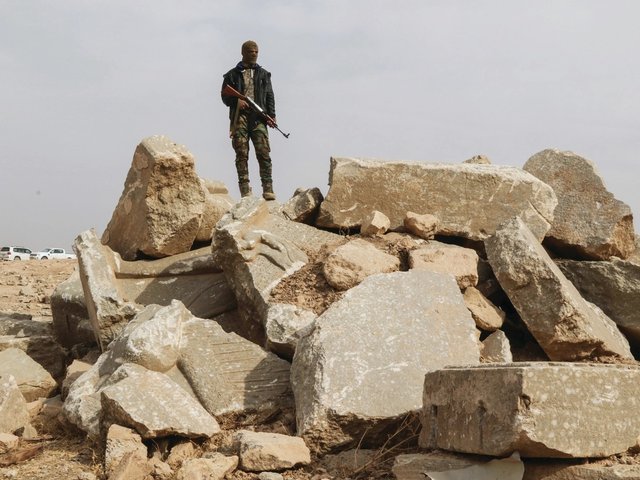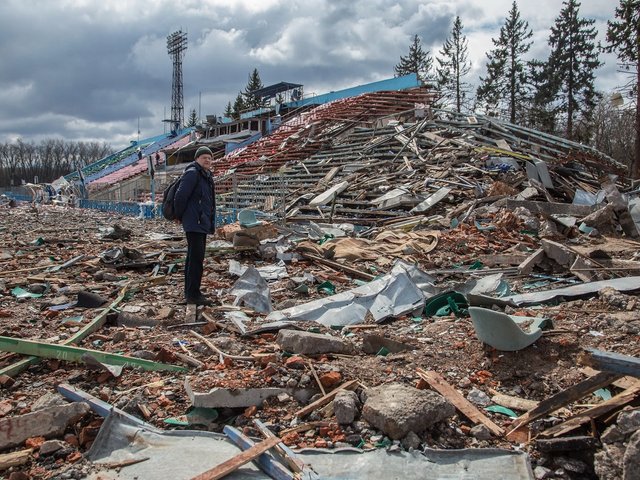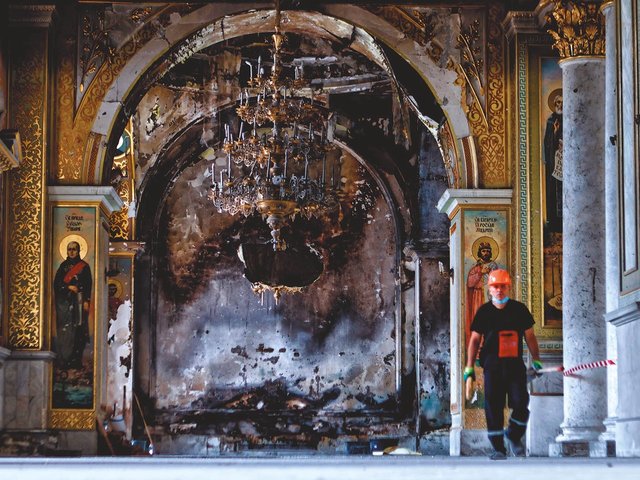Culture and conflict have been entangled for the whole of recorded history: Polybius warned fellow Ancient Greeks that armies should avoid damaging religious sites unnecessarily. But in recent decades the deliberate targeting of culture in wars on the one hand and the emergence of a military-heritage complex on the other has led cultural professionals to either work alongside the military on heritage protection or be full-time officers or reservists themselves.
This has ratcheted up since recent interventions in Iraq and Afghanistan where the US military deployed anthropologists in the field. Cultural Heritage in Modern Conflict is mostly soldiers and military-adjacent figures giving their academic perspective on the issues arising.
You will not be surprised at the panoply of well-meaning delusion, outright cynicism and Western arrogance on parade here
You do not have to be a raging peacenik to find the idea of (mostly British) generals, captains and colonels and various other wagers of war as chief contributors to a book on protecting heritage to be, let’s say, challenging. And, with some honourable exceptions, you will not be surprised at the panoply of well-meaning delusion, outright cynicism and Western arrogance on parade.
Too often, this is not about protection for its own sake, but securing military advantage using culture as a “non-lethal lever of influence” to pacify a country under occupation. Major Luke Wattam, a Cultural Specialist Unit reservist in the British army, writes: “My understanding of the role was… to endear myself to target populations as a means to exploit relationships for defence effect. I was never under the illusion that I was making friends or operating in an environment that was anything but geared toward[s] exploitative outcomes.”
Peter Stone, the Unesco chair in cultural property protection and peace at Newcastle University, is more nuanced. He has worked tirelessly to get armies to take account of heritage and has been directly involved in preparing no-strike lists for Nato that seek to avoid damage to historic sites. A favourite anecdote, repeated here, is the decision by Nato, following Stone’s involvement, to use smaller armaments in Libya to destroy Gaddafi’s mobile radar stations sited within a Roman-era fortified farm at Ras Almargeb. The target was duly hit and the archaeology saved.
The decision to preserve historic Kyoto led to the nuking of Hiroshima. Should we view this as a success?
But a preserved Roman farm was a high price to pay for Nato’s adventurism across Libya, which turned the country into a failed state complete with modern slave markets and leaving its entire heritage at incalculably greater risk. Similarly, it was the decision to preserve historic Kyoto that led to the nuking of Hiroshima. Should we view this as a success? It is the repeated failure to have regard to the larger ethical picture that characterises this book and the wider military-heritage complex.
Some contributions are jaw-droppingly odd, such as counter terrorism expert Suzanne Raine’s discussion of Islamist attacks on culture. Her clash-of-civilisations narrative spends rather too much time examining Ariana Grande lyrics, while her analysis of the effects of securitisation on our freedoms does not go much deeper than bag searches at concerts.
There are exceptions. The ever-readable Dacia Viejo Rose, an associate professor of archaeology at Cambridge University, wonders whether the intertwining of identity and heritage forms anchors or quicksand. It is inevitable, she reminds us, that heritage will be contested—“all heritage is dissonant”. Etienne Bergès, humanitarian policy adviser at the British Red Cross, gives us a bracingly frank account of the failures of reconciliation initiatives in Myanmar’s Rakhine state that put oppressor and victims on an equal footing.
Overall, the book is a fascinating insight into intellectual friendly fire; the soldier-contributors are justifying a good war on the back of saving culture yet buy into a neo-colonial view of the world that has destabilised entire regions. Of course, some co-operation with uniforms is necessary to safeguard heritage in war zones and as a result of natural disasters, and Stone wants his organisation, Blue Shield (this writer is also a member), to become a heritage version of the Red Cross. If that is to happen, though, eliding humanitarian and military goals is a profound mistake. This book reminds us why we need healthy boundaries and for heritage to keep firmly to the humanitarian path.
• Cultural Heritage in Modern Conflict: Past, Propaganda, Parade, Timothy Clack and Mark Dunkley (eds), Routledge, 344pp, 33 b/w illustrations, £120 (hb)





